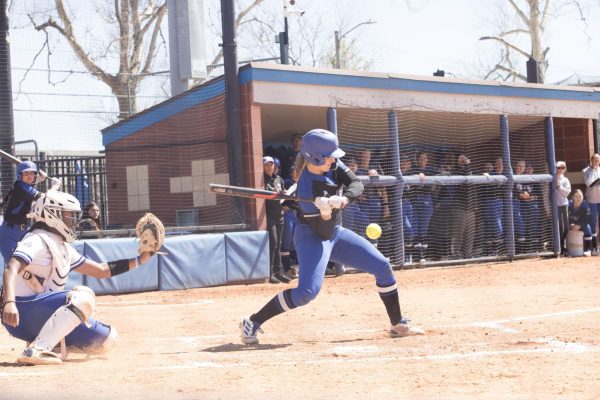What you need to know about Rugby
Rugby might not be a sport that most Americans, let alone college students, know much about, but Eastern women’s rugby head coach Frank Graziano can educate them.
Having taken Rugby Education 101, fans will understand what they are watching when they watch the Panthers on Sunday as they play Minnesota at 3 p.m.
Rules of the Game
The rules of rugby are a combination of football and soccer, and the main difference between rugby and American football is there is no forward pass in rugby.
This means players can only throw the ball to the side or behind them.
There are no downs in rugby, which makes it continuous play, similar to soccer.
Rugby is broken into two 40-minute halves to make one 80-minute game.
The field, or ground as it is called in rugby, is almost the same size as a soccer field with the rugby ground only being 110 yards instead of the 120-yard soccer field.
Rugby players do not wear any pads.
The most pads that a rugby player would wear are shin guards. Any other equipment must be approved by the International Rugby Board.
Positions
The rugby positions are similar to soccer.
There is no specific offense or defense like in football. Instead, the players play both ends of the field.
Graziano said he recruits girls out of high school that are basketball and track and field athletes because they need to be athletic and able to cover all the ground that is covered in rugby.
There are 15 players on each side of the ball in rugby, which can lead to a lot of action happening at once.
Players need to have a variety of skills in order to play rugby. Players need to be able to run for at least 80 minutes consecutively, while dodging other players coming after them trying to tackle them if they are the ball carrier.
Scoring
The scoring is similar to football, a touchdown and extra point make seven points and a penalty kick is three points.
The major difference in rugby is a touchdown counts for five points, while the extra point it two points.
In order to score, the ball must be physically placed on the ground in order to record five points.
The extra point is kicked perpendicular from where the ball was placed down, to score the extra two points. This makes it more difficult to score those extra points because of the angle, if you score on the outside rather than the middle of the field.
A penalty kick is awarded if the defensive team makes an infringing penalty. If the kick is made through the uprights, three points are awarded.
This makes scoring in rugby more strategic, as a player will run along the sideline, cross the goal line and run toward the middle of the field in order to have a better position for the kicker to make the extra point.
Steve Morck can be reached at 581-7944 or [email protected].
Terms to know
SCRUM – used to restart the game after a stoppage of play. This involves both teams forming a tunnel and the ball rolled in the tunnel and the ball is hooked by a team member’s foot and rolled out to someone outside the scrum.
KNOCK ON – essentially a fumble, comparable to football.
THROW FORWARD – when a player attempts to throw the ball forward. Forward is defined as toward the opposing team’s goal. The goal itself is actually called the goal line.
MAUL – occurs when the opposing team is tackling a player. The non-tackling team has a player come behind his or her teammate and push the player toward the other team’s goal line.












































